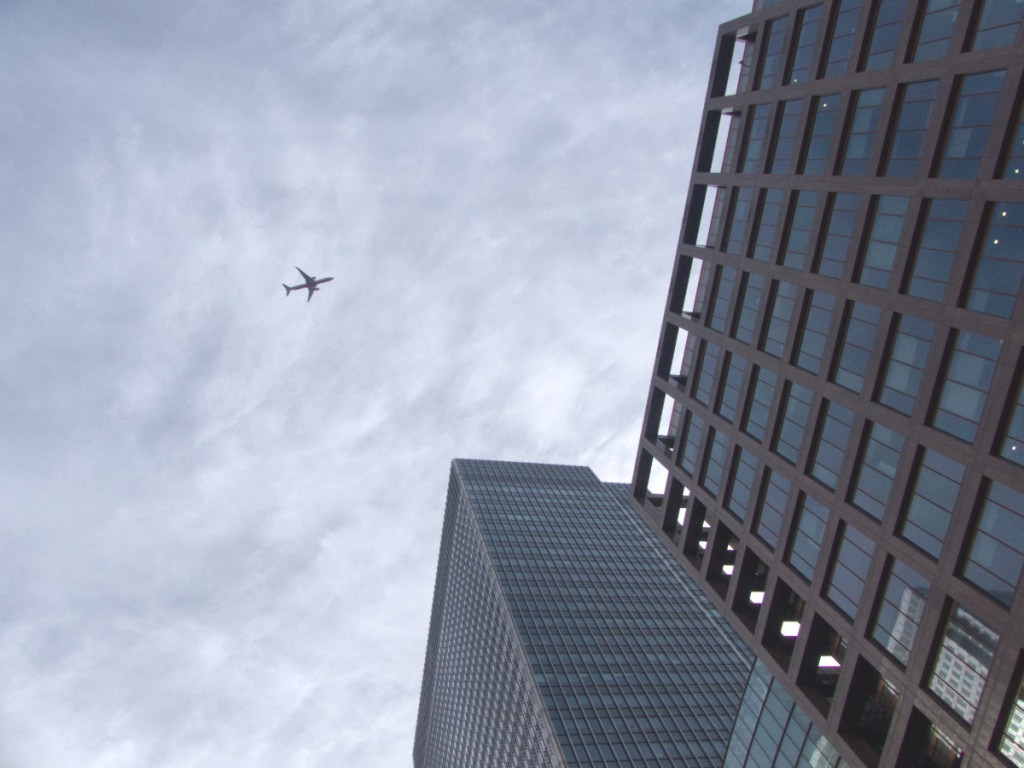
The Radical Walk, Canary Wharf & Marx’s Literary Style is on Thursday 16 May
A short promotional film about Canary Wharf
Impressions matter. This is a time of accelerated media production. An ever increasing number of image-objects, a relentless global expansion of capital, billions of packets of data each second moving almost at the speed of light. The Spectacle that Debord described in 1967 has inflated; it is greater in volume and weight, more intense in colour and emotion.
Urban landscapes are collections of individual objects which are collated into single image impressions. Canary Wharf is simultaneously a collection of individual buildings, and a single image of that collection. It is a large mass. That’s it’s main characteristic. There is nothing monumental about any of the individual buildings or the buildings collected together. The mass of the buildings is the only striking aspect. The only dimension that anyone notices is the height and overall scale; and hence, the whole ensemble becomes one-dimensional. There is much exhibitionism and egotism and vanity but there’s not much on show for the voyeur or idly curious.
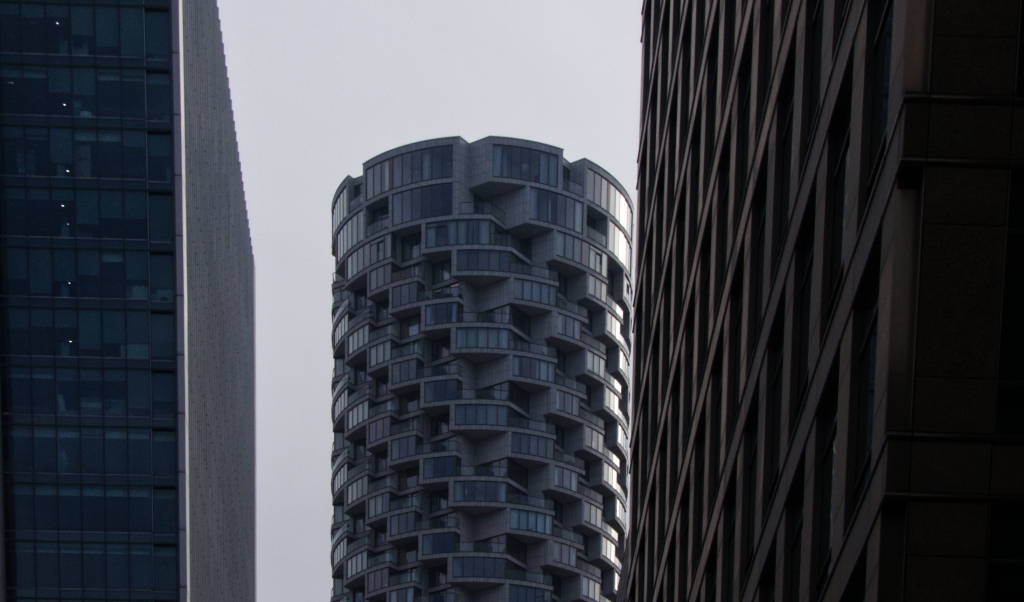
The mass of these buildings is a public image; it can be seen from all over London, from outside London, probably from outer space. And yet it is a private space, all the buildings controlled by swipe card access and building management, the streets patrolled by private security guards, the whole area under the relentless surveillance of the estate management CCTV. It is worth noting what they fail to see, as much as what they record and why.
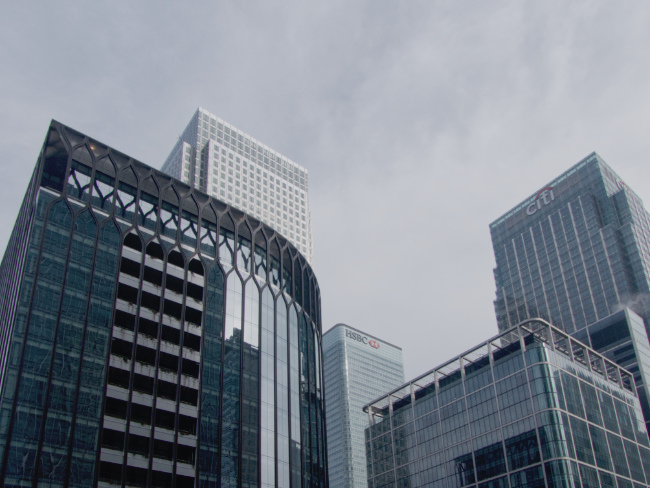
The capitalist relations of production, whereby one class oppresses another, are not just felt within the four walls of the hundred feet office blocks. Those relations are felt in the streets, in the shopping centres and on the edges where the financial district must defend itself against criminal incursions. Despite its mass, the whole area is a weird vacuum that sucks the life out of the surrounding areas. There is an eerie alienation about the whole place, in part caused the exploitation of alienated labour in the production processes. Contrast the forms of labour that created this financial district, and the forms of labour that created the gothic cathedrals of northern Europe and consider why the buildings are so different.
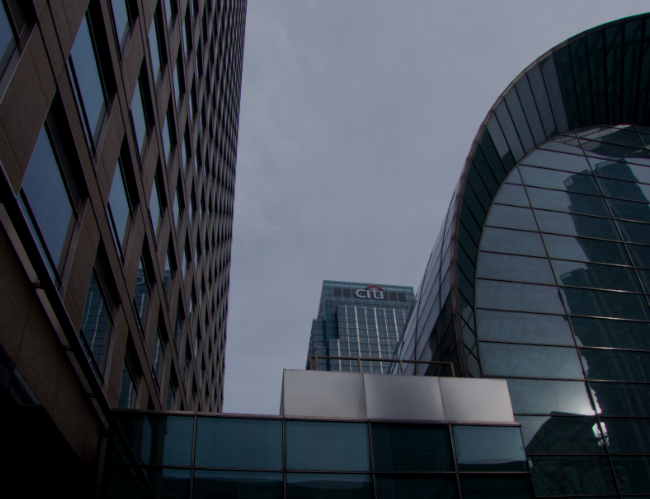
The buildings have blank faces and vacant eyes and gaping mouths which say nothing. There is an atmosphere of oppressive dullness, the regimentation of monotony; concrete, glass and steel as ‘unnourishing gruel’. This is capital as a conquering force. The former working class communities of east London smashed by the technical revolution of containerisation, the policy of the Port of London selling land for property development, the Thatcherite hatred of trade unions, the privatisation of public services for private profit. Capital isn’t one bomb type; it’s a collection of weapons used by an army of accountants, speculators, despotic governments, billionaire investors. They are humourless with thin, watered down blood. Nothing floats here, no sense of weightlessness, no unbearable lightness of being.
The area a creation of advanced industrialisation in which machines dominate all aspects of production. The making of steel has become standardised, computer software is standardised, microchips are standardised. The zip taps in the corporate kitchens are standardised, the salmon avocado sour dough bread sandwiches are standardised, the industrial strength carpets where the dead are piled up are all the same colour and contain exactly the same number of synthetic fibres per square foot.

There is a lack of intimacy here, no corners, a lack of meadow headlands, no forgotten paths to be discovered that lead to unknown destinations. There are no curves, no mysteries to be revealed. The only mysteries are the commodity and the processes whereby human labour power creates capital.
It is not obvious from the unkind glass walls what might be going on inside these buildings. We can guess that there are some people in there with hobgoblins in their heads. Senior managers at war with each other in disputes that no one understands. Wars about budget and resource allocations, disputed policy decisions, office seating plans, hours of work, hire and fire and crushing of the opposition, real and imagined enemies and allies. Humiliations, bullying, oppressions are applied unevenly, but exploitation applies to all.

The buildings are connected up with fibre optic cables, subterranean networks, satellite communications. Packet switching knows no nation-state borders or passport control checks. The vehicles have the same dimensions, the same badges of petrol choking vanity; Land Rover, BMW, Mercedes, Toyota, Ford, Honda, Tesla. A global motorcade of spite and oil thick venom with panicking shouts of ‘I need my SUV!’
The buildings give a sense of a terrified internal screaming. An illusion of control by the head fixing machines of the anti-imagination campaign. Concentrated neurosis, unresolved gestalt. Fear strikes the buildings in a lightning flash, a market crash, banks failing, unexpected debt collapse, the falling value of Commercial Real Estate, the inability of Evergrande and Country Garden (the two biggest property developers in China) to service their loans. They have liabilities of $300 bn and $150bn respectively. They are too big for the Chinese government to bail out, they are too entwined with private investment and public spending to be allowed to fail. There will be no peaceful conclusion to capitalism. Minute particles of explosives are embedded in each of the image objects. Cars, buildings, laptops, smartphones; they all contain grains of violence; the violence of the exploitation of labour.
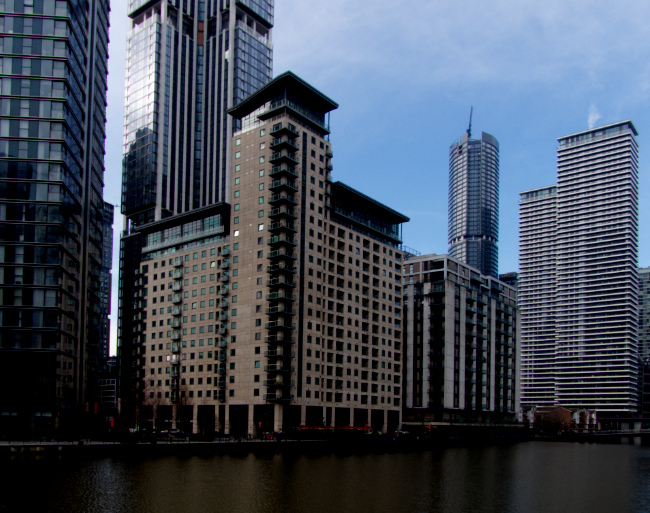
One Saturday morning I travelled up an escalator inside the Peter Jones department store in Sloane Square. A woman on the shop-floor was turning over pillows or cushions or blankets, I can’t remember now. She wore a diamond ring and when it caught the light shooting star flashes of the most intense light filled the space. It was beautiful and extraordinary. It was unexpected and the mystic vision it fired stayed with me for some time. Beauty is possible within capitalism but it usually comes with the most terrible of price tags.
Canary Wharf is a washed up landscape of pile driven steel and piled up concrete. It lacks elegance, charm and elan. There is no complexity about the landscape. Everything is measured to millimetre tolerances with advanced steel cutting technology and precision engineered glass. There is nothing seductive, no flashes of brilliance.
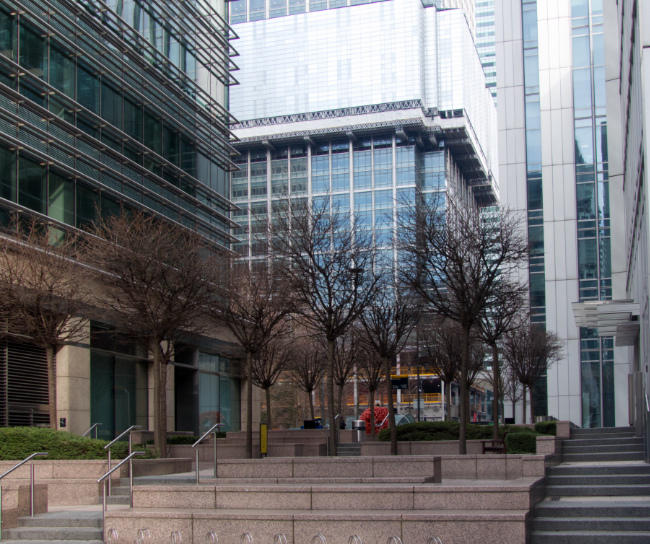
What to make of the workforce here? It seems to be simultaneously homogeneous and heterogenous. Everyone wears similar styles of mass produced clothing, with a smattering of expensive suits. It is impossible from observing people exiting Canary Wharf tube station early in the morning who is a Chief Executive, a database administrator, a receptionist, network engineer or real estate analyst. When this was a working dock area there were visible differences between the dockers who climbed into the holds of the ships, the tally clerks and the managers. Bowler hats or flat caps, shoes or boots, suit and tie or jacket and muffler. The faces and physique of those who worked outside all day in heavy physical movement were different to those who worked in the dock offices and custom houses. Now people look increasingly all the same. The homogenisation of capital creating a homogenisation of social type.
When confronted with these walls of glass it is difficult to tell what the working and workplace cultures are of the organisations based there. There will be cultures of enthusiasms; inappropriate hugging of colleagues, over-sharing of personal stories, frothy email missives about how awesome everything is. There will be cultures of coercion and control, embedded oppressive practices, hierarchical behaviours, crazed power centre battles where the ammunition is made up of other human beings. Paranoia will sweep through the 40 storey floor, a mutually assured destruction of petty hates and larcenies.
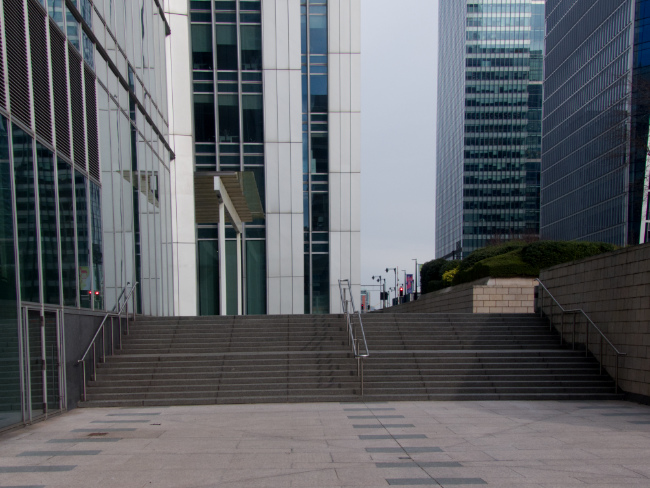
Inside, the endless repetitions of patterns and replications of styles. Similar open plan layouts with ceilings where the infrastructure of electrical power, air conditioning and ethernet cables are half exposed (it’s cheaper that way, and so a new aesthetic is created). Grey carpets, white painted walls, white MDF table tops, black computers and laptops and monitors, black swivel chairs with occasional multi-coloured exceptions (‘for a more playful atmosphere’). Here and there subversive attempts to personalise the work station, the point of production, the exact spot where labour is exploited as if this might lessen the full impact of being each day a wage slave. Photographs of loved ones, favourite pets, even the workers themselves in unlikely settings, clubs in Ibiza, the sea of the Caribbean, the snow covered mountains of the Alps. Cups with anti-motivational slogans, withering pot-plants, pens that don’t work, post-it notes, half-finished packets of biscuits, a paper copy of a report that was never read.
Canary Wharf is a small number of large buildings. One alternative is a large number of smaller buildings. The main dynamic for creating a small number of large buildings is the movement of capital to accumulate more capital. It is generally more productive for capital to invest and expand on a large scale. This creates its own problems, contradictions and tensions. The large amounts of capital invested in a small number of large buildings becomes frozen, difficult to move. Capital, that social phenomena that so like to move freely, becomes trapped.
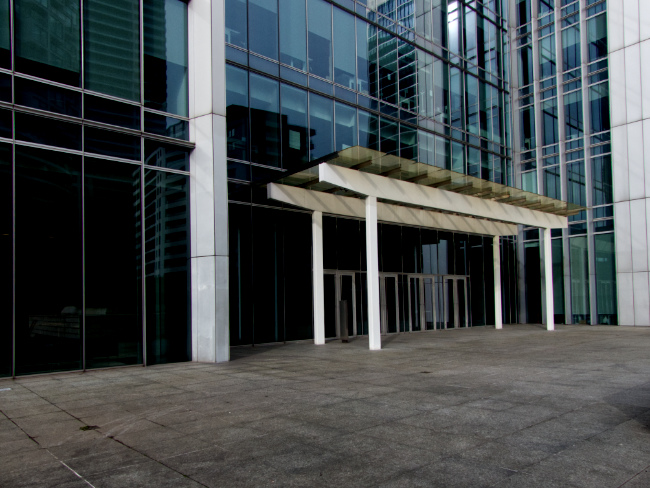
A large number of smaller buildings have more social dynamism and are easier to change, they are more likely to provide the sort of variation of use and style that many people find pleasant and stimulating. But they don’t make such large profits for investors.
Once this was all new, revelling in its shiny glory of the destruction of the dock workers’ unions, brash and bold, a new world of deregulated finance capital, an appearance of money making money from money itself, squarely planted in yet another phase of capitalist development. The internationalisation of production, supported by ongoing technical development, able to shift production to areas of cheap labour and concentrate banking, investment and financial services in a small number of finance centres.
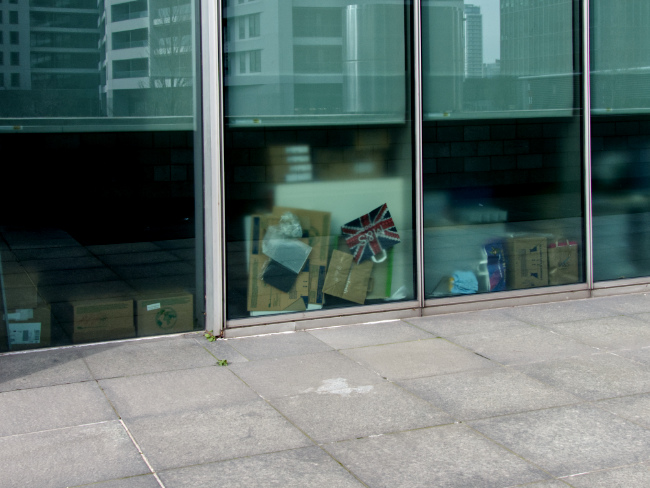
But the very forces that gave rise to Canary Wharf have continued to develop. Since 1991 when the first tower at One Canada Square was completed, China and India have industrialised, the oil rich states of the Middle East have conjured up huge cities with their own dense mass of towers and computing centres and banking software.
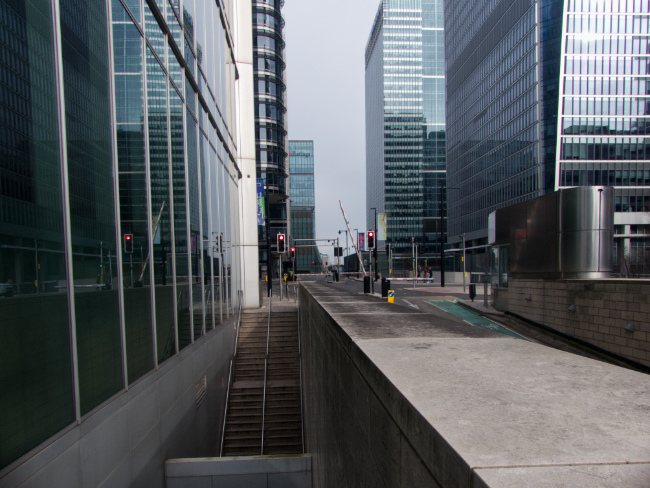
Canary Wharf is a product of an earlier time, stuck in that time, uncertain how to move, in some ways unable to move. Nervous of the technical shift which has enabled office work to become mobile, remote, from home, from cafes. Anxious of the further shifts in which AI is automating an increasing number of office processes.
Dock work changed as the labour processes shifted from being labour intensive to capital intensive. Instead of hundreds of seafarers on a 30,000 tonne ship, there are now 27 seafarers on a 300,000 tonne ship carrying 24,000 containers. Instead of 100,000 dockers in the Port of London moving 3 m tonnes of goods (as was the case in the 1930s), there are now a small number of dockers in Felixstowe and Southampton moving hundreds of millions of tonnes of goods.
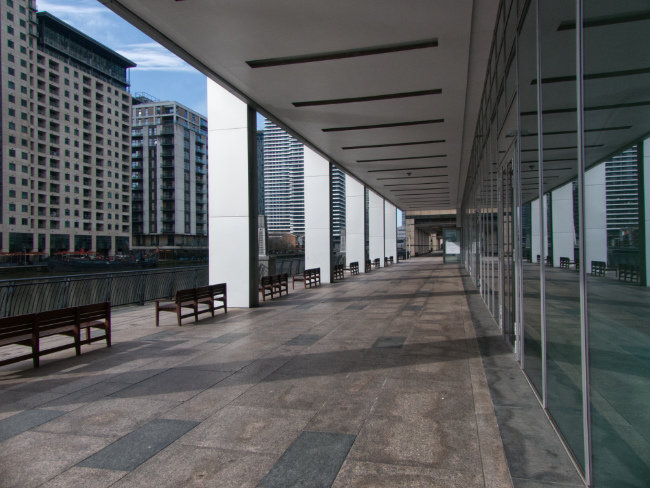
It once seemed impossible that office work could ever change from being labour intensive to capital intensive but that process is now accelerating. The dock workers spent nearly 80 years (the enclosed docks first appeared in London in the early 1800s) before achieving some form of union organisation through the strike of 1889. And then they built up organisation and even some control of their own labour processes.
It is estimated that between 120,000 – 180,000 (depending on who is included) people work in Canary Wharf and yet there is scant union organisation.
All the ingredients for capitalism are here: capital, investment, large workplaces, constant revolutions in the tools of production, exploitation of labour.
But there is one ingredient that’s missing: organised labour.
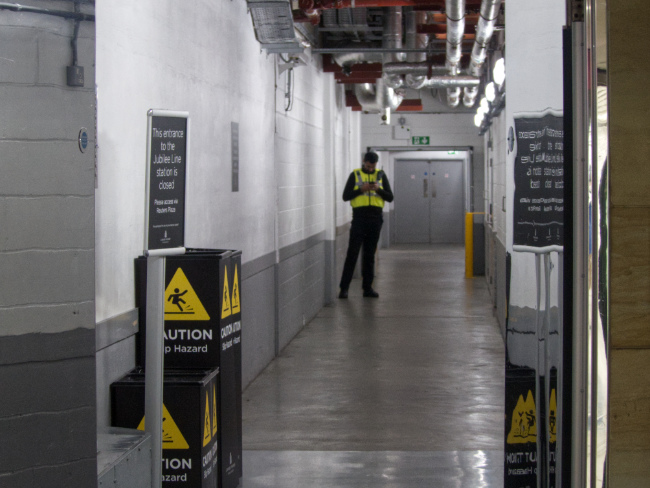
You must be logged in to post a comment.